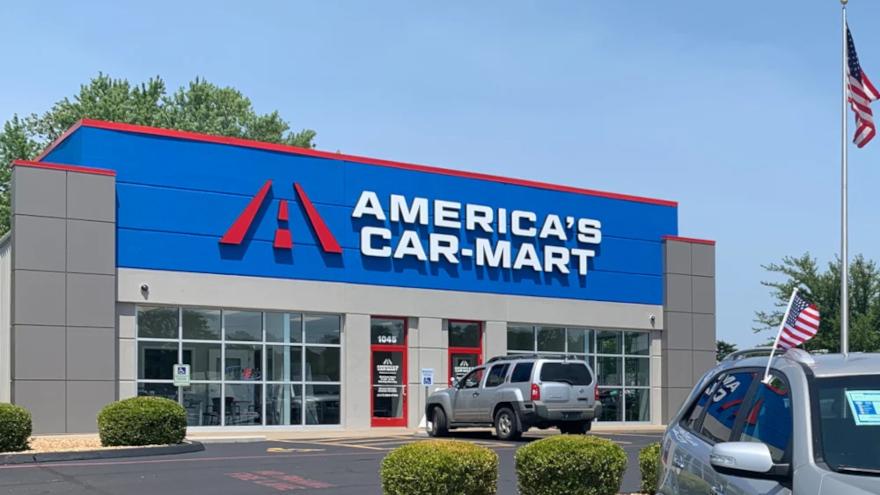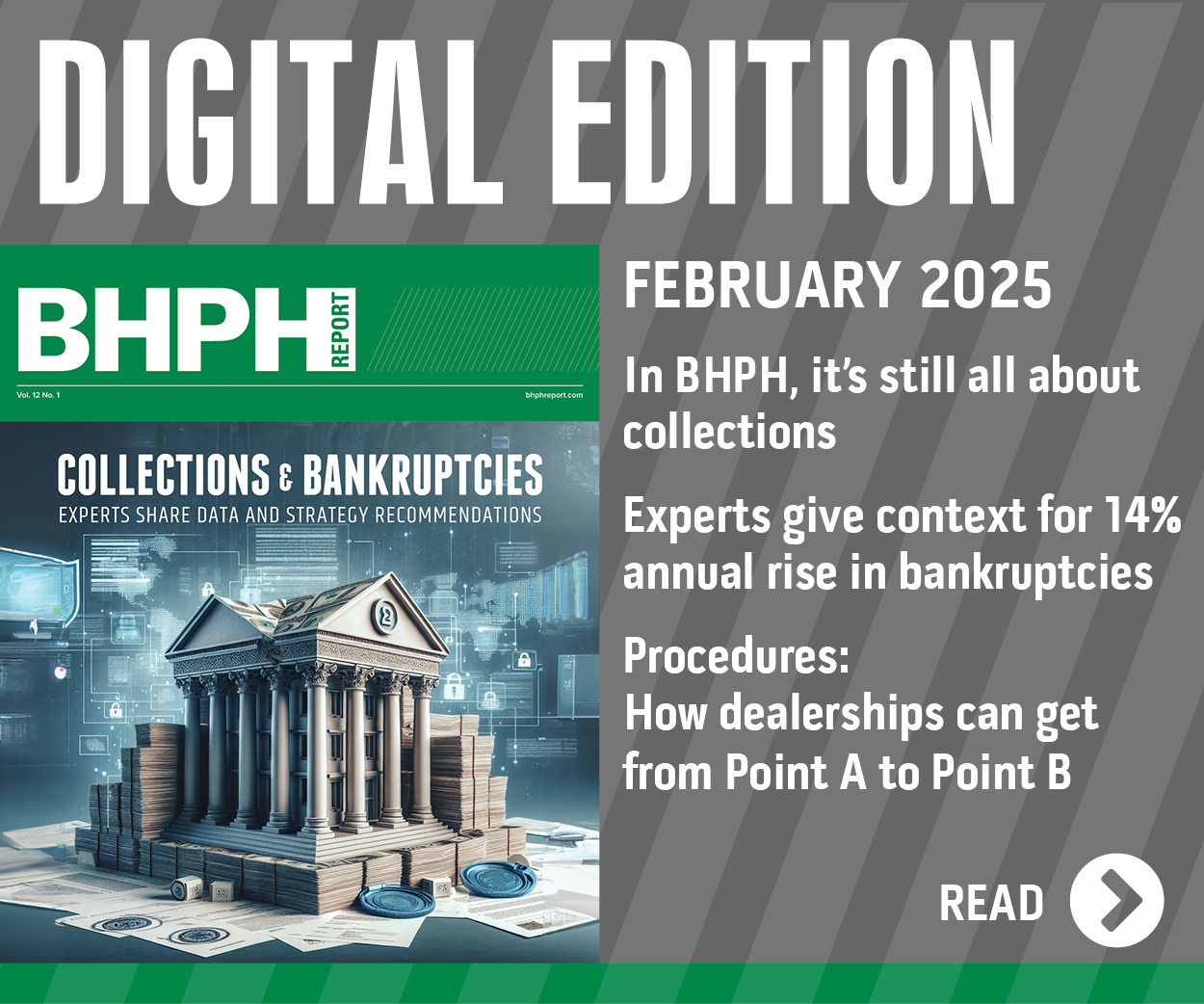Campbell to succeed Williams as Car-Mart CEO

Image courtesy of the company.
Coming off the first quarter of its 2024 fiscal year that included sales gains and “normalization” of charge-offs, America’s Car-Mart also announced on Tuesday that its board of directors has elected current president Doug Campbell to succeed Jeff Williams as CEO and to serve as a director of the company.
According to a news release, Campbell’s move to CEO is effective Oct. 1, and Williams will remain with the company as CEO emeritus through the end of 2024 fiscal year.
Car-Mart said Williams also will continue his service on the board.
“Since 2018, America’s Car-Mart has grown its customer base 50%, doubled book value per share, increased finance receivables from $500 million to $1.4 billion, and diversified its funding through a successful securitization program. We have also embarked on several investment projects critical to our long-term success and increasing productivity,” Williams said in the news release.
“Importantly, to reach our full potential, we have aggressively recruited key talented executives. Doug is top among these new talents, and I’m very pleased that he will become CEO of America’s Car-Mart. Doug is a great leader and will take our company to the next level,” Williams continued.
Before joining Car-Mart last October, Campbell was senior vice president and head of fleet services for the Americas, at Avis Budget Group after serving as vice president of remarketing leading their wholesale, retail, and factory program disposals.
Campbell led the strategic growth of the direct-to-consumer initiative and the overhaul of a business-to-business online direct sales platform, both contributing to meaningful reductions in overall fleet costs.
Prior to joining Avis Budget Group, Campbell worked for AutoNation in both corporate and field leadership roles. Previously, he spent 15 years at Coral Springs Auto Mall as an executive general manager overseeing several brands selling both new and used vehicles.
“I’m thrilled to have such an incredible opportunity to lead America’s Car-Mart as CEO,” Campbell said about leading the 42-year-old operation. “Over the last year I’ve witnessed how dynamic, resourceful, and agile our associates and leaders are. Jeff has led the company through a challenging environment while kicking off some of the most important initiatives in our company’s history.
“I’m thankful for his leadership and ongoing assistance through the transition. I look forward to building upon the momentum Jeff has put in motion, and working with our team on the next chapter of growth and transformation while continuing to give back to the communities we serve,” Campbell continued.
The company said Campbell will continue to serve as president until his appointment as CEO.
Car-Mart board chair Josh Welch recognized Campbell and Williams for their leadership and the initiatives put in place during the past year.
“Doug has learned our business quickly. He appreciates our culture, the importance of our value proposition to any community, has made meaningful improvements to our operations and is an excellent leader. Jeff positioned the company for substantial long-term growth and profitability; Doug has the skillsets to elevate our execution, delivering on the enormous demand for basic transportation and credit in towns across the country,” Welch said.
“We are grateful for the many key business initiatives launched under Jeff’s leadership. Jeff continues to be a large shareholder in America’s Car-Mart and will continue his dedicated work until the end of fiscal year 2024, subsequently remaining as a consultant to the company to help ensure a smooth transition,” Welch went on to say.
Q1 performance
Along with the executive announcements, Car-Mart reported what it called “strong” revenue growth in the first quarter of fiscal year 2024, with net income “negatively impacted by credit results.”
The company tabulated that diluted earnings per share were $0.63 on revenue of $368.0 million for the quarter.
Car-Mart articulated these key highlights from the first quarter. All comparisons are on a year-over-year basis unless otherwise noted. They included:
—Revenues of $368.0 million, up 8.6%.
—Total retail unit sales increased 2.4%. Same store retail revenue growth was 8.2%.
—Sales volume productivity per store per month was 34.2 versus 33.6, an increase of 1.8%.
—Gross profit per car sold was $6,768 compared to $6,5241.
—Provision for credit losses as a percentage of sales was 30.9% compared to 25.9%. Net charge-offs as a percentage of average finance receivables for the quarter were 5.8% compared to 5.1%.
—Interest income was up 27.3% to $56.5 million, compared to $44.3 million.
—SG&A as a percentage of sales was relatively flat at 14.9% versus 14.7%. SG&A was up $3.2 million and up $0.7 million, sequentially. Excluding stock-based compensation, SG&A was down $0.6 million sequentially. SG&A per average customer was $449 versus $450.
—Interest expense was $14.3 million, compared to $7.3 million.
—Total debt to finance receivables was 49.3% up from 46.5% as of April 30, and total debt, net of cash, to finance receivables (non-GAAP), was 42.9% at the end of the first quarter, up from 41.5%2 as of April 30.
—Customer count increased 8.1% to 104,734 active customers. Customers served per dealership was 680, compared to 629.
—Diluted EPS was $0.63 versus $2.071.
“In the first quarter, improvements in many areas of the business — unit sales, gross margin, repair costs, diminishing wholesale losses, online credit application activity, working capital management and closing underperforming stores were overshadowed by the increase in the provision for loan losses during the period. The major drivers behind higher loan losses related to post-stimulus normalization of charge-offs, additional provisioning resulting from increased contract term, and a higher average interest rate for the portfolio. Said in a different way, we are experiencing the same credit results on the portfolio as we have historically, but the contract length has changed,” Williams said in another news release.
“We anticipate this dynamic will reverse in the future leading to a more normalized reserve provision. In effect, the current principal collected, as a percentage of finance receivables, has been lower, creating a higher allowance for losses rather than being reported in earnings and equity. We continue to increase our allowance for credit losses, providing $14.8 million more than charge-offs during the period,” he continued.
“Our loan origination system is now being utilized in all our stores for customer pre-approvals, improving our ability to maximize deal structures according to the risk each customer presents, and positioning us well for long-term success. While our competition is struggling with access to capital, we are not. Our healthy increase in sales volumes and scale, not to mention our on-going business investments, are giving us ever-increasing advantages in the marketplace,” Williams went on to say.


